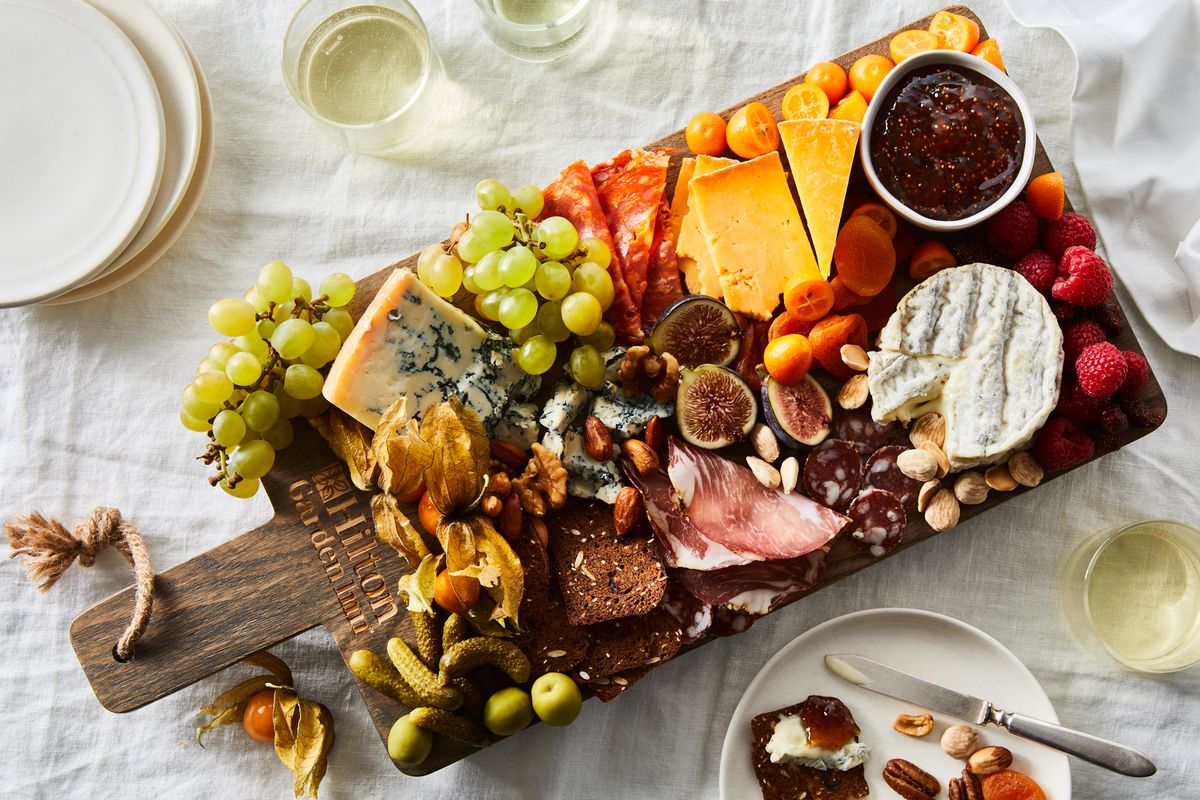There’s something inherently alluring about a well-arranged cheese board. It’s not just a platter of dairy products; it’s an art form, a sensory experience, and a conversation starter. Whether you’re hosting a party, planning a romantic evening, or just indulging yourself, a thoughtfully curated cheese board can elevate any occasion. In this blog, we’ll explore the art of crafting the perfect cheese board, from cheese selection to accompaniments and presentation.
The Foundation: Cheese Selection
- Variety is Key The first rule of creating an impressive cheese board is diversity. Select a variety of cheeses with different textures, flavors, and milk sources. A good rule of thumb is to include at least three to five different types of cheese. Common options include:
- Soft cheese: Brie, Camembert, or Goat cheese.
- Semi-soft cheese: Gouda, Havarti, or Blue cheese.
- Semi-hard cheese: Cheddar, Gruyère, or Manchego.
- Hard cheese: Parmesan, Pecorino, or Comté.
- Specialty cheese: Try something unique like truffle-infused cheese or a local artisanal option.
- Consider Pairings Think about complementary flavors and textures when choosing your cheeses. For example, pair a creamy Brie with tart apple slices, or match a pungent blue cheese with sweet honey.
- Don’t Forget About Milk Types Incorporate cheeses made from different types of milk, such as cow, goat, and sheep. This adds complexity to your board and accommodates different dietary preferences.
Accompaniments: The Art of Complementing
- Fresh and Dried Fruits Fresh fruits like grapes, figs, and apple slices provide a refreshing contrast to the richness of cheese. Dried fruits such as apricots and dates offer a chewy, sweet component.
- Nuts Toasted almonds, walnuts, or pecans add a satisfying crunch and nutty undertones to the board. They’re a great pairing with many cheese varieties.
- Bread and Crackers Serve a selection of bread and crackers, from baguette slices and artisanal crisps to gluten-free options. These act as the perfect canvas for your cheese and accompaniments.
- Condiments A variety of condiments can elevate your cheese board, including honey, chutneys, grainy mustard, or fruit preserves. These add zing and complexity to the overall taste.
- Olives and Pickles For a briny element, include a selection of olives and pickles, which can cut through the richness of the cheese and provide balance.
Presentation: The Visual Feast
- A Beautiful Platter The canvas for your cheese board is crucial. Choose a wooden or marble platter, slate board, or a rustic wooden cutting board for an appealing backdrop.
- Balance and Composition Arrange your cheeses and accompaniments with balance and composition in mind. Start with the cheeses as the focal point, placing them in different corners or sections of the board. Then, fill in the gaps with fruits, nuts, and other accompaniments.
- Garnishes Fresh herbs like rosemary or thyme can add a touch of elegance. They not only look beautiful but also infuse a subtle aroma.
- Labels If you’re serving a variety of cheeses, consider labeling them with name tags to help your guests navigate their choices.
Conclusion
Crafting the perfect cheese board is a delicious and creative endeavor. The key is to embrace variety, experiment with textures and flavors, and consider the sensory experience you want to create. A well-arranged cheese board is a true culinary work of art that delights the palate and sparks conversations. So, the next time you’re planning a gathering or simply craving a gourmet snack, let your cheese board be the centerpiece of the occasion. Your taste buds and guests will thank you for the experience.


